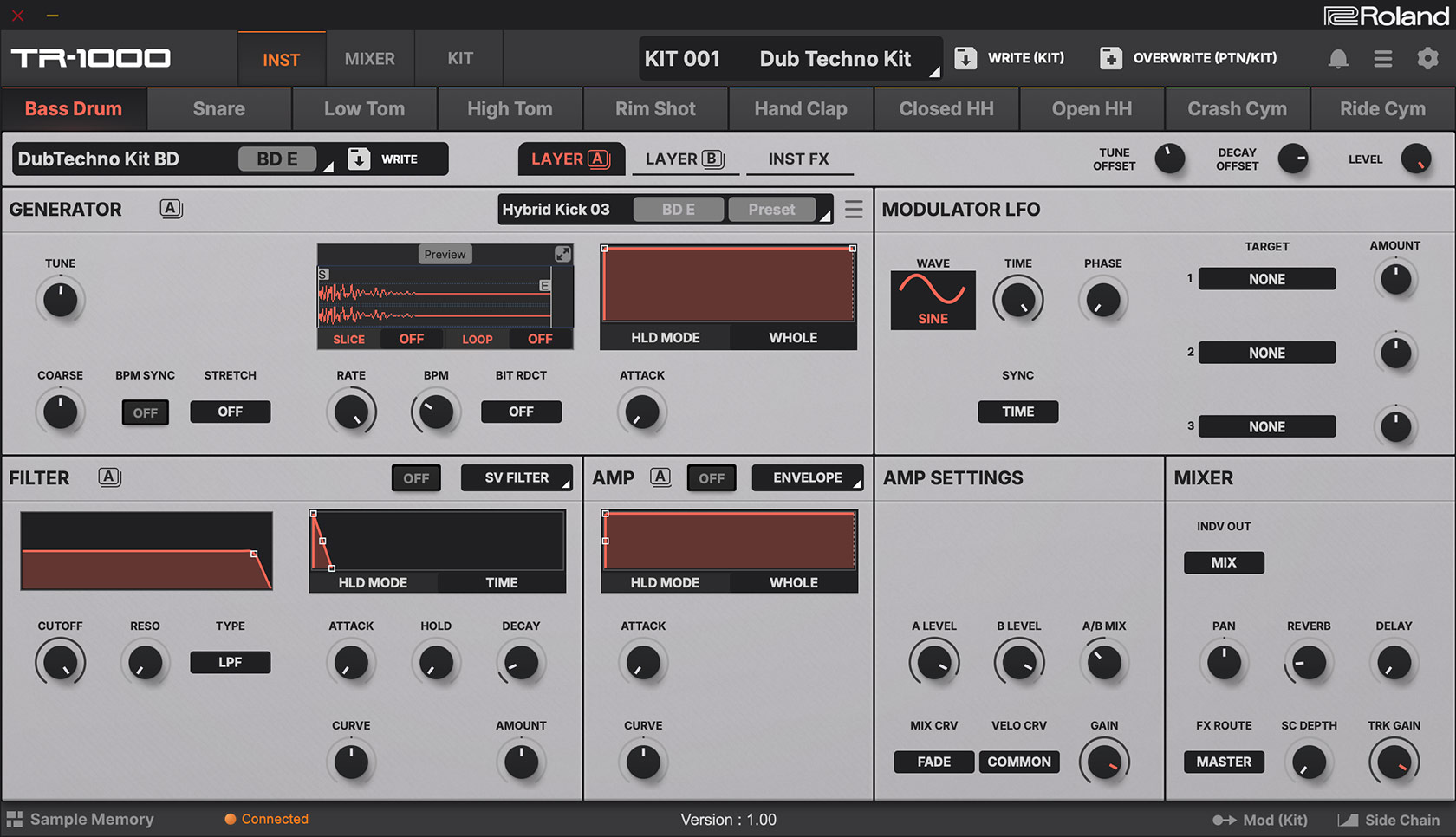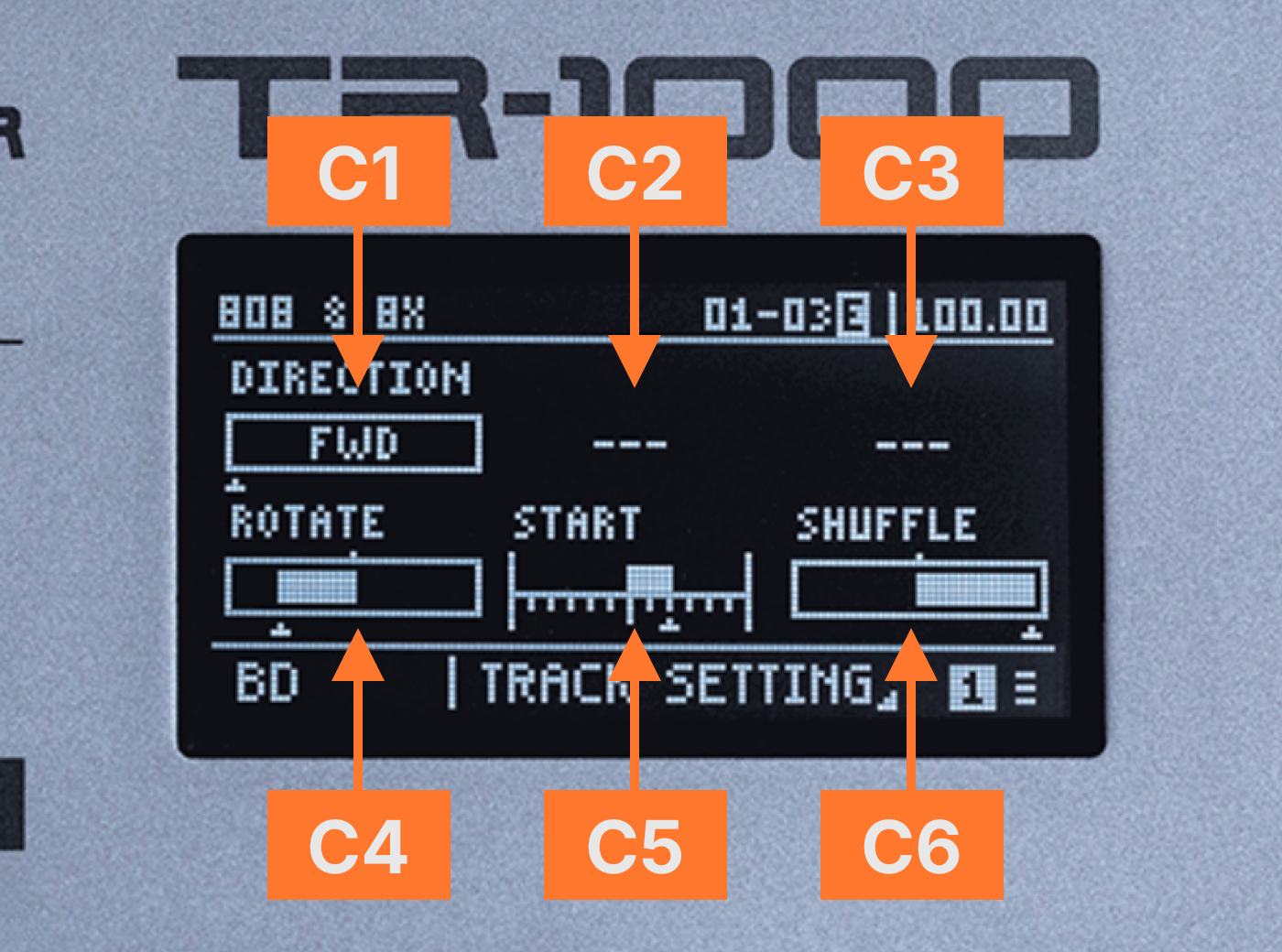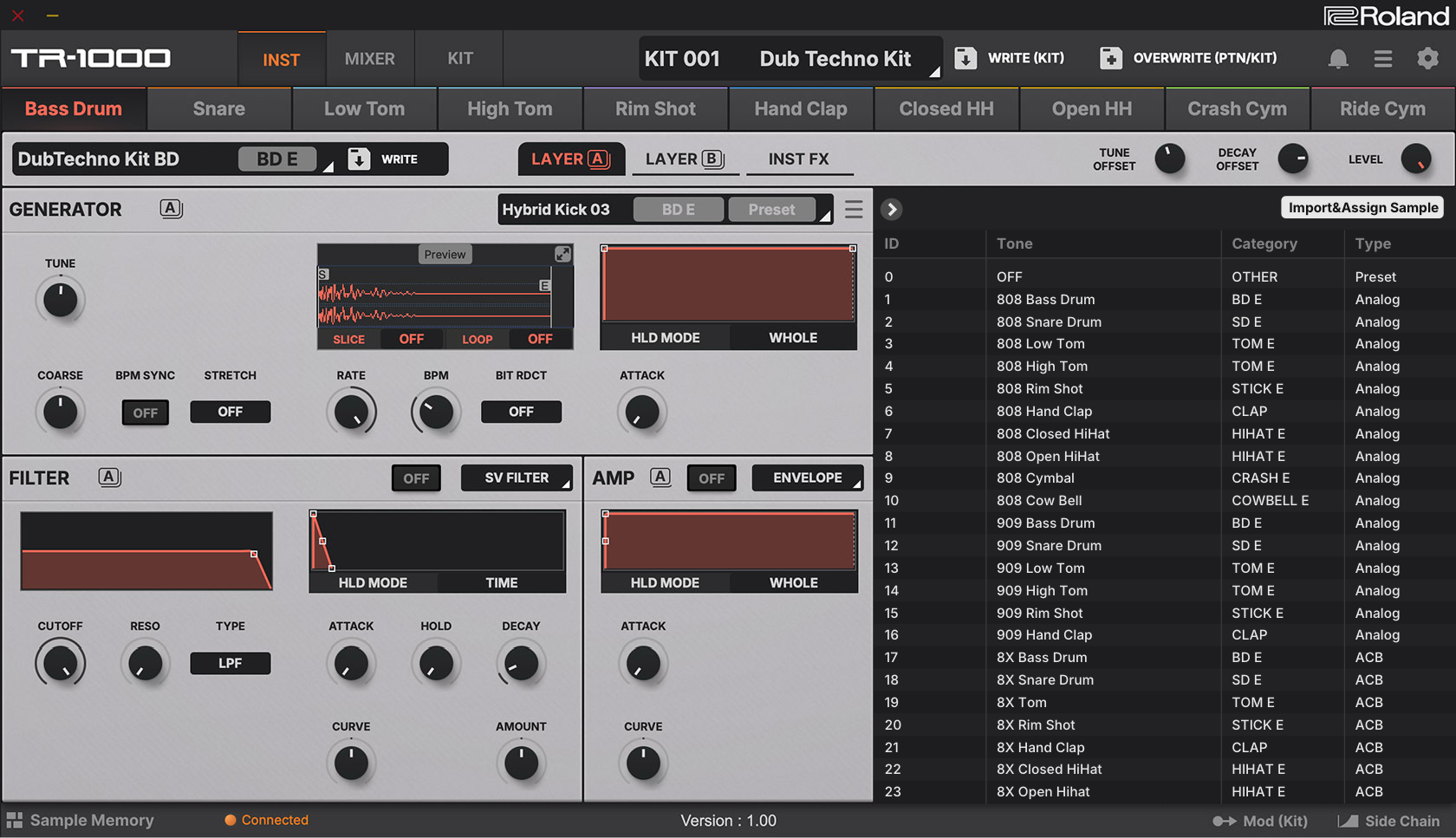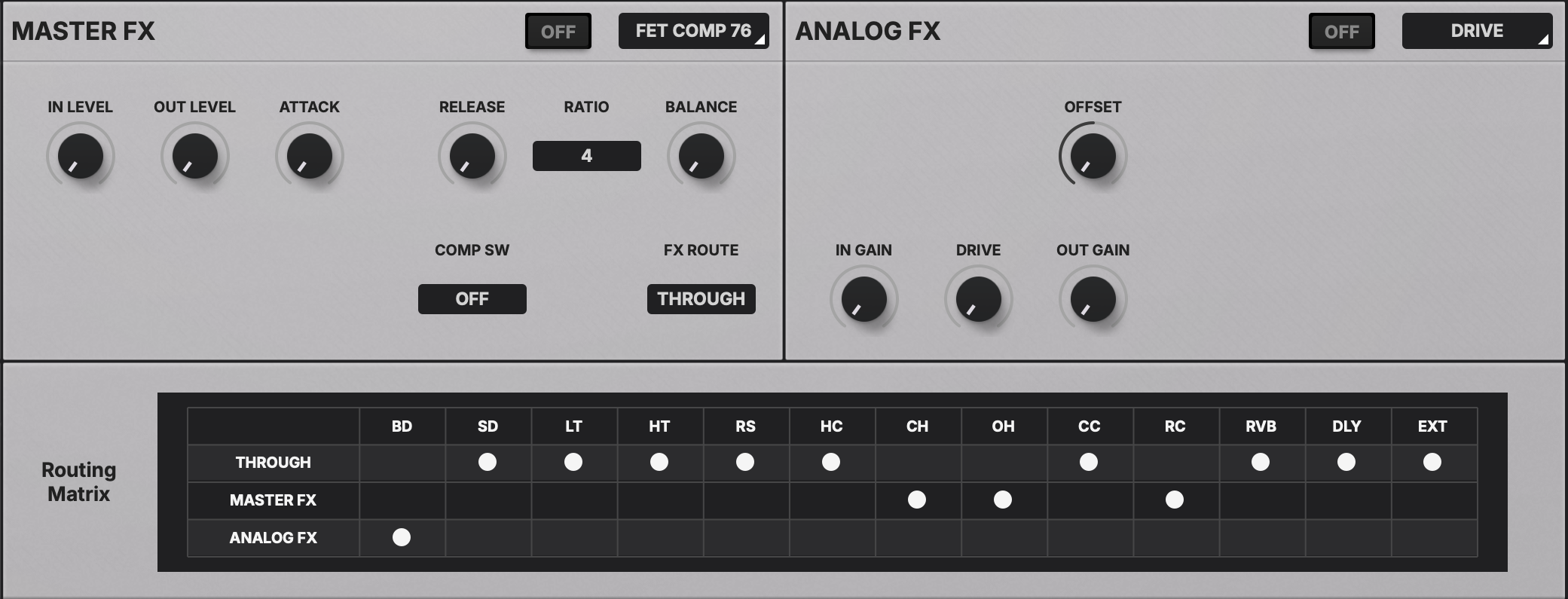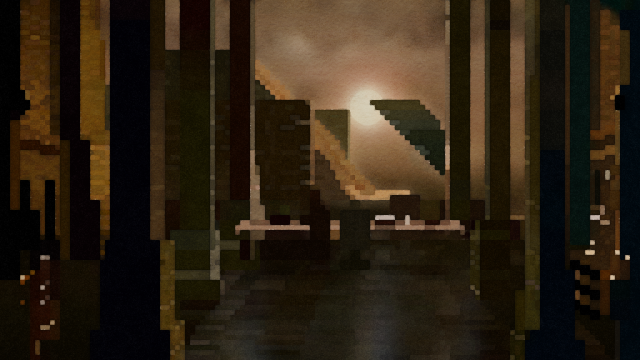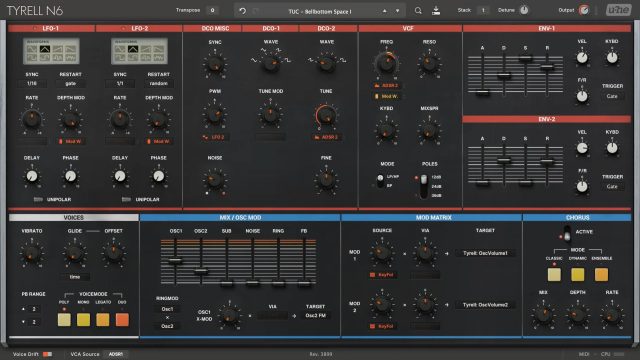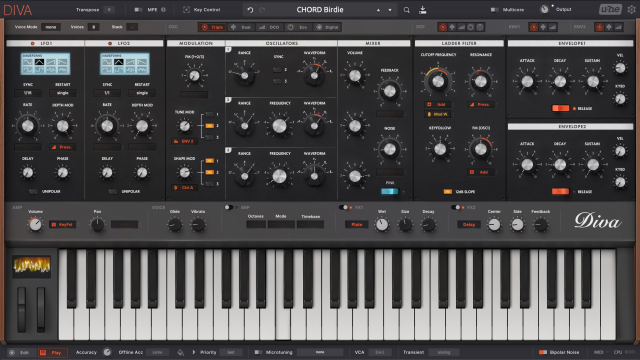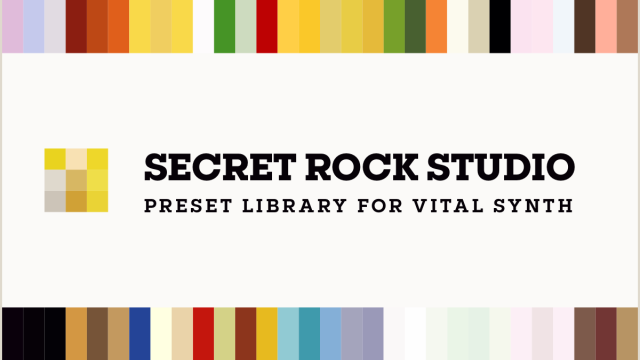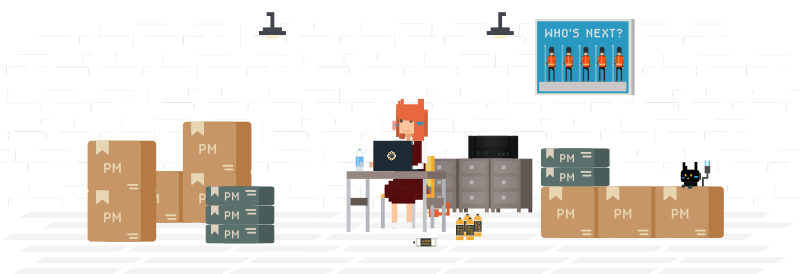Roland has released a monumental analog drum machine — the TR-1000 — for the first time in decades. And I had the honor of designing the UI for its editor and librarian software!
The final implementation was done by another developer, and although a few tweaks were made after delivery, they brought my vision to life almost exactly as I had imagined.
About the Editor
On the hardware, up to six parameters are shown on the display, each assigned to one of the C1–C6 knobs located directly below it.
Since editing requires frequent page switching, some users may find that workflow a bit constrained.
That’s where the Editor app comes in — it allows you to view roughly ten pages’ worth of parameters on a single screen, making it easier to grasp the overall structure of a sound.
For deeper sound design, working within the app will be far more efficient, especially when editing sampler parameters on a larger display.
Structure
The top priority in designing this UI was to ensure consistency with the hardware experience. The goal was to create a unified interface that feels natural when moving from hardware to software and back again.
To achieve this, the layout preserves the original 3×2 arrangement of the C1–C6 knobs as much as possible, while extending the pages horizontally to the right.
The blank spaces between the knobs are intentionally kept to mirror the hardware layout, where some positions are simply left unassigned.
In a few cases, such as the MODULATOR LFO assignments, I intentionally rearranged elements for better usability, but aside from that, the layout strictly follows this core principle.
Plugmonism
My strength in UI design lies in usability — creating intuitive flows that come from the perspective of the user.
For example, the preset browser in the Generator section slides in from the right side so that it doesn’t cover the Gen, Filter, or Amp areas. This allows users to tweak parameters while browsing presets without having to close the list each time.
The Routing Matrix placed in the KIT tab was also added so users can check and modify routing paths while editing effects.
Routing can also be configured in the MIXER tab, so some parameters appear in multiple places — but this has always been part of my design philosophy: duplication is justified when it greatly improves usability.
Appearance
The TR-1000 hardware features a solid, handcrafted design that remains timeless even decades later. Following that spirit, the software also aims for a minimal appearance that helps users stay focused on their work.
Since every user of this editor is also a hardware owner, we chose an authentic look that makes use of subtle gradients and shadows, rather than adopting an overly flat design.
At the same time, I wanted to carry over some of the pop and colorful kawaii essence found in the classic 808 and 909. This is expressed through the colored track bands seen in the tabs.
The track colors correspond to the illuminated buttons on the hardware, and in the software they also serve as clear visual identifiers.
Users can have fun customizing them — for instance, by matching the classic 808 color scheme or going full AIRA-style with bright green across all tracks.
Personal Thoughts
The TR-1000 is a long-awaited rhythm machine for me personally.
As a sound designer, I’ve always longed for the analog sound of the 808 and 909. But until now, it’s been a difficult choice: either pay a premium for a vintage unit or settle for a budget clone. Now, those two legendary machines have finally come together in one instrument — without the sky-high vintage prices!
I believe that the 808 is no longer just a “drum machine,” but a true instrument in its own right — just as a guitar is more than a plucked string instrument, and a piano is more than a percussive keyboard.
And for that reason, the world should feel free to create countless new incarnations of the 808, just as no one criticizes Steinway or Yamaha for continuing to create new grand pianos more than 300 years after the instrument’s birth.
And It’s truly an honor to have taken part, even in a small way, in the long history of Roland’s analog drum machines. My heartfelt thanks go out to everyone who has supported PLUGMON along the way.

